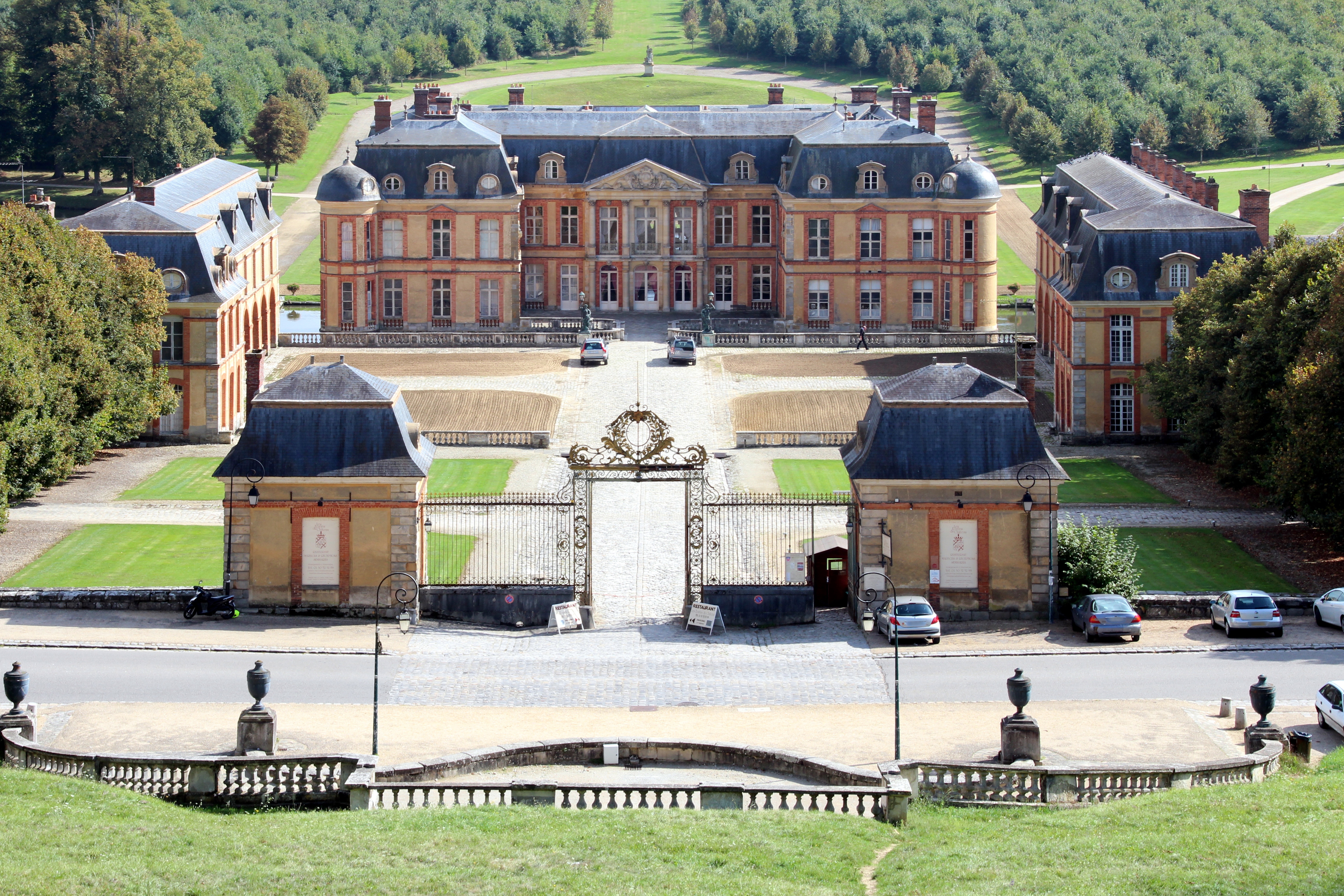Château de Dampierre on:
[Wikipedia]
[Google]
[Amazon]

 The Château de Dampierre is a castle in
The Château de Dampierre is a castle in

 The Château de Dampierre is a castle in
The Château de Dampierre is a castle in Dampierre-en-Yvelines
Dampierre-en-Yvelines is a commune in the Yvelines department in the Île-de-France region in north-central France.
The Castle of Dampierre-en-Yvelines
One of the main features of the commune is the prominently featured castle, or Chateau, of ...
, in the ''Vallée de Chevreuse
Vallée de Chevreuse (Chevreuse Valley) is the valley of the Yvette River in the Yvelines and Essonne departments.
It encompasses the communes around Chevreuse (Saint-Rémy-lès-Chevreuse, Choisel, Dampierre, etc.) within the Parc naturel rég ...
'', France
France (), officially the French Republic ( ), is a country primarily located in Western Europe. It also comprises of overseas regions and territories in the Americas and the Atlantic, Pacific and Indian Oceans. Its metropolitan ar ...
.
Built by Jules Hardouin-Mansart
Jules Hardouin-Mansart (; 16 April 1646 – 11 May 1708) was a French Baroque architect and builder whose major work included the Place des Victoires (1684–1690); Place Vendôme (1690); the domed chapel of Les Invalides (1690), and the Grand ...
in 1675–1683 for the duc de Chevreuse, Colbert's son-in-law, it is a French Baroque
French (french: français(e), link=no) may refer to:
* Something of, from, or related to France
** French language, which originated in France, and its various dialects and accents
** French people, a nation and ethnic group identified with France ...
château of medium size. Protected behind fine wrought iron double gates, the main block (''corps de logis
In architecture, a ''corps de logis'' () is the principal block of a large, (usually classical), mansion or palace. It contains the principal rooms, state apartments and an entry.Curl, James Stevens (2006). ''Oxford Dictionary of Architecture ...
'') and its outbuildings, linked by balustrades, are ranged symmetrically around a dry paved and gravelled ''cour d'honneur
A ''cour d'honneur'' (; ; german: Ehrenhof) is the principal and formal approach and forecourt of a large building. It is usually defined by two secondary wings projecting forward from the main central block ('' corps de logis''), sometimes w ...
''. Behind, the central axis is extended between the former parterre
A ''parterre'' is a part of a formal garden constructed on a level substrate, consisting of symmetrical patterns, made up by plant beds, low hedges or coloured gravels, which are separated and connected by paths. Typically it was the part of ...
s, now mown hay. The park with formally shaped water was laid out by André Le Nôtre
André Le Nôtre (; 12 March 1613 – 15 September 1700), originally rendered as André Le Nostre, was a French landscape architect and the principal gardener of King Louis XIV of France
, house = Bourbon
, father = Lo ...
. There are sumptuous interiors. The small scale (compared to Vaux-le-Vicomte
The Château de Vaux-le-Vicomte (English: Palace of Vaux-le-Vicomte) is a Baroque French château located in Maincy, near Melun, southeast of Paris in the Seine-et-Marne department of Île-de-France.
Built between 1658 and 1661 for Nicolas F ...
for example) makes it easier to compare it to the approximately contemporary Het Loo
Het Loo Palace ( nl, Paleis Het Loo , meaning "The Lea") is a palace in Apeldoorn, Netherlands, built by the House of Orange-Nassau.
History
The symmetrical Dutch Baroque building was designed by Jacob Roman and Johan van Swieten and was bu ...
, for William III of Orange
William III (William Henry; ; 4 November 16508 March 1702), also widely known as William of Orange, was the sovereign Prince of Orange from birth, Stadtholder of Holland, Zeeland, Utrecht, Guelders, and Overijssel in the Dutch Republic fro ...
.
The ''grande galerie'' was reconstructed for the amateur archaeologist and collector, Honoré Théodoric d'Albert de Luynes
Honoré Théodore Paul Joseph d'Albert, 8th Duke of Luynes (15 December 1802 – 15 December 1867) was a wealthy French nobleman and scholar. He is most remembered for the collection of exhibits he gave to the Cabinet des Médailles in 1862, and f ...
, under the direction of antiquarian architect Félix Duban
Jacques Félix Duban () (14 October 1798, Paris – 8 October 1870, Bordeaux) was a French architect, the contemporary of Jacques Ignace Hittorff and Henri Labrouste.
Life and career
Duban won the Prix de Rome in 1823, the most prestigious aw ...
. Sculptor Pierre-Charles Simart
Pierre-Charles Simart (born in Troyes on 27 June 1806, died in Paris on 27 May 1857) was a French sculptor.
The son of a carpenter from Troyes in Champagne, Simart was the pupil of Antoine Desbœuf, Charles Dupaty, Jean-Pierre Cortot and J ...
contributed Hellenic friezes and reliefs for the project. Ingres
Jean-Auguste-Dominique Ingres ( , ; 29 August 1780 – 14 January 1867) was a French Neoclassical painter. Ingres was profoundly influenced by past artistic traditions and aspired to become the guardian of academic orthodoxy against the a ...
' ''Age of Gold'' remains as testament to the abortive project of decorating it in fresco, not Ingres' habitual medium.
The park, which lost many trees in the storm of 26 December 1999, offers a formal canal and an eighteenth-century garden folly.
See also
*List of Baroque residences
This is a list of Baroque palaces and residences built in the late 17th and 18th centuries. Baroque architecture is a building style of the Baroque era, begun in late 16th-century Italy and spread in Europe. The style took the Roman vocabulary of ...
References
{{DEFAULTSORT:Dampierre, Chateau de Baroque buildings in France Châteaux in Yvelines Gardens in Yvelines Historic house museums in Île-de-France Houses completed in 1683 Museums in Yvelines 1683 establishments in France